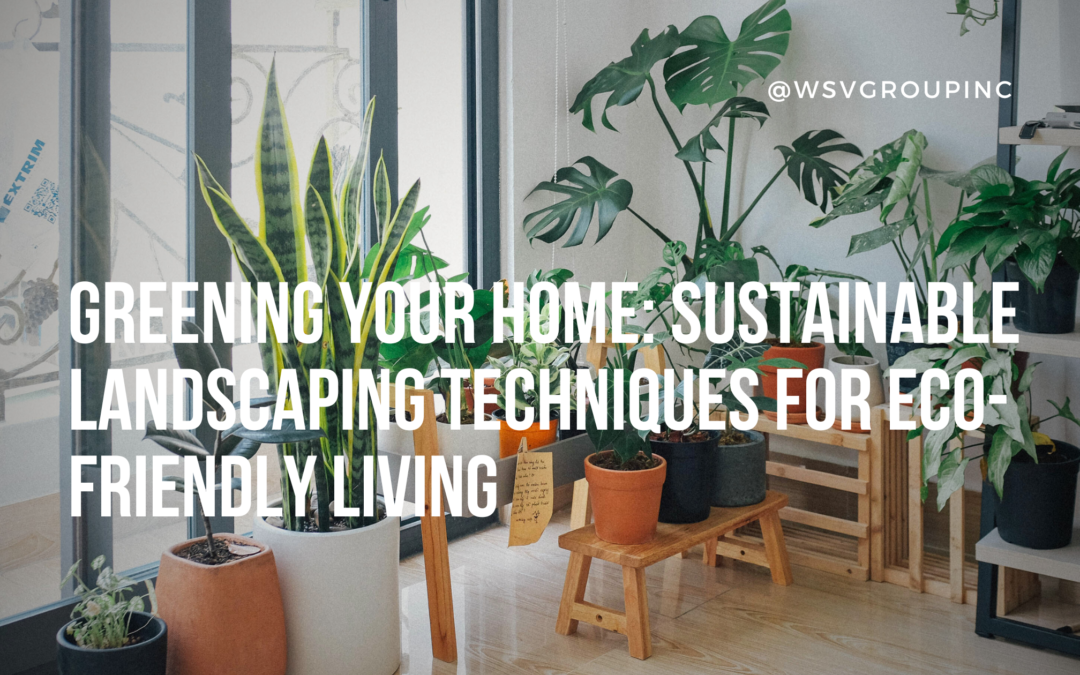In the pursuit of a greener and more sustainable lifestyle, one often overlooks the outdoor spaces of their homes. However, sustainable landscaping offers a plethora of benefits beyond mere aesthetics. By incorporating eco-friendly practices into residential landscapes, homeowners can reduce their environmental footprint, conserve resources, and create a healthier living environment for themselves and their communities. In this blog post, we’ll explore some sustainable landscaping techniques tailored specifically for residential properties, offering practical tips to transform your outdoor space into a sustainable oasis.
- Native Plant Selection:
One of the fundamental principles of sustainable landscaping is the use of native plants. Native plants are adapted to the local climate, soil, and environmental conditions, requiring minimal water, fertilizer, and pesticides once established. By incorporating native species into your landscape design, you not only conserve water and reduce maintenance but also provide habitat and food sources for local wildlife, fostering biodiversity in your backyard. - Water-Wise Irrigation:
Water scarcity is a growing concern in many regions, making efficient irrigation practices essential for sustainable landscaping. Consider installing drip irrigation systems or soaker hoses to deliver water directly to the root zones of plants, minimizing water waste through evaporation and runoff. Additionally, investing in smart irrigation controllers equipped with weather sensors can optimize watering schedules based on real-time weather data, ensuring that your landscape receives just the right amount of moisture to thrive. - Rainwater Harvesting:
Harnessing rainwater for irrigation is a cost-effective and eco-friendly alternative to traditional municipal water sources. Install rain barrels or cisterns to capture runoff from your roof, gutters, and downspouts, storing it for later use in watering your garden and landscape beds. Not only does rainwater harvesting reduce your reliance on potable water supplies, but it also helps alleviate stormwater runoff, mitigating erosion and pollution in local waterways. - Soil Health Management:
Healthy soil is the foundation of a thriving landscape, supporting plant growth, water retention, and nutrient cycling. Practice organic soil management techniques such as composting, mulching, and vermiculture to improve soil structure, fertility, and microbial activity. Incorporating composted organic matter into your soil not only enriches its nutrient content but also helps sequester carbon from the atmosphere, combating climate change on a small scale. - Eco-Friendly Hardscaping:
When designing outdoor living spaces, opt for sustainable hardscape materials such as reclaimed wood, recycled concrete, and natural stone sourced from local quarries. These materials not only reduce the environmental impact of construction but also lend a unique aesthetic charm to your landscape design. Additionally, permeable paving options such as gravel, permeable concrete, and porous asphalt allow rainwater to infiltrate the ground, replenishing groundwater supplies and reducing stormwater runoff.
Incorporating sustainable landscaping techniques into residential properties is not only beneficial for the environment but also enhances the beauty, functionality, and value of your home. By choosing native plants, implementing water-wise irrigation systems, harvesting rainwater, improving soil health, and using eco-friendly hardscape materials, homeowners can create landscapes that are not only visually appealing but also ecologically resilient and resource-efficient. Embrace the principles of sustainable landscaping and embark on a journey towards greener living for a brighter and healthier future.

